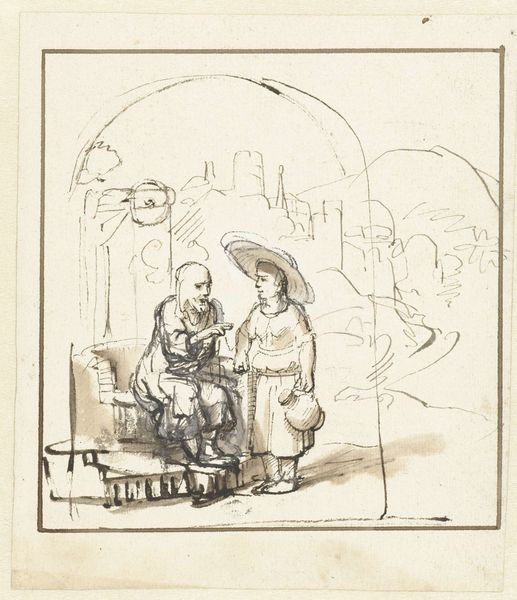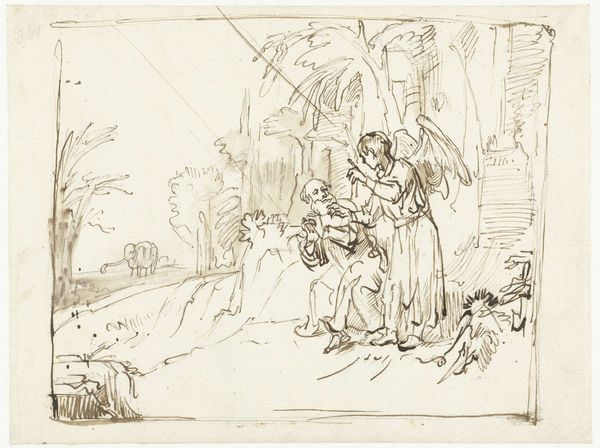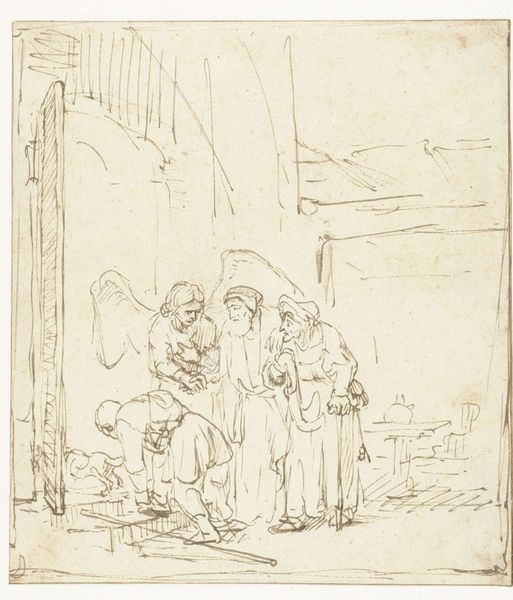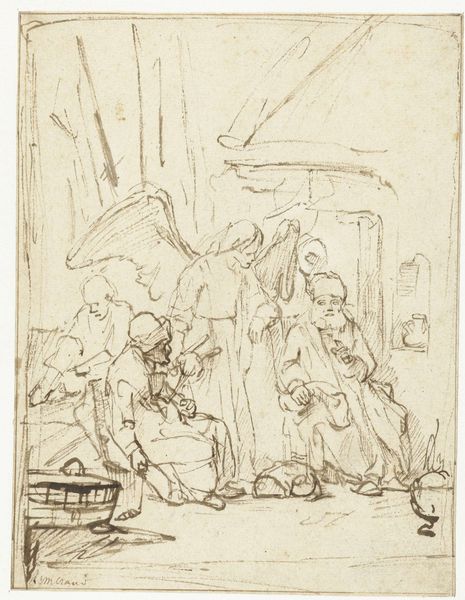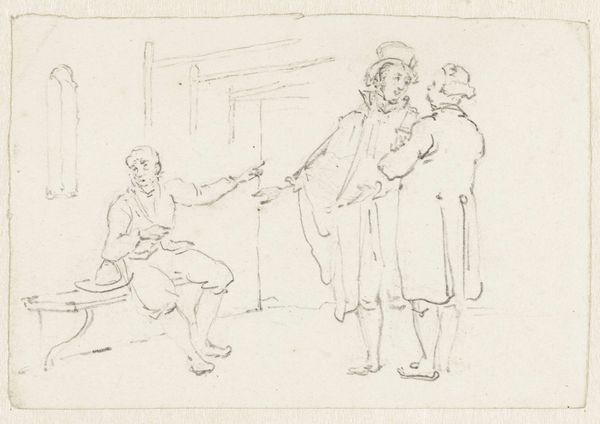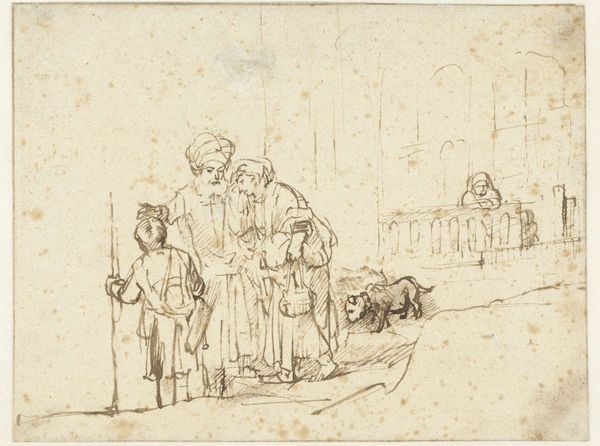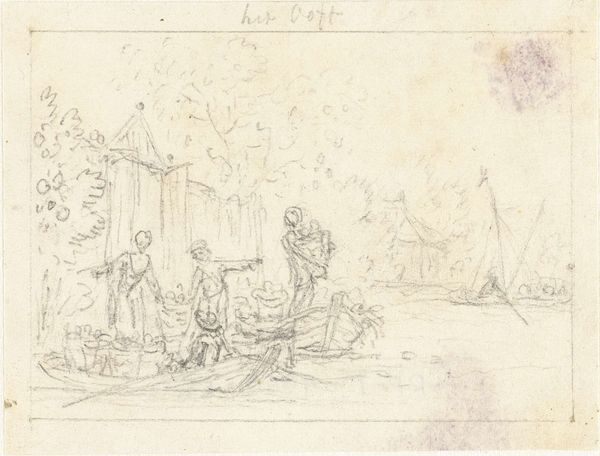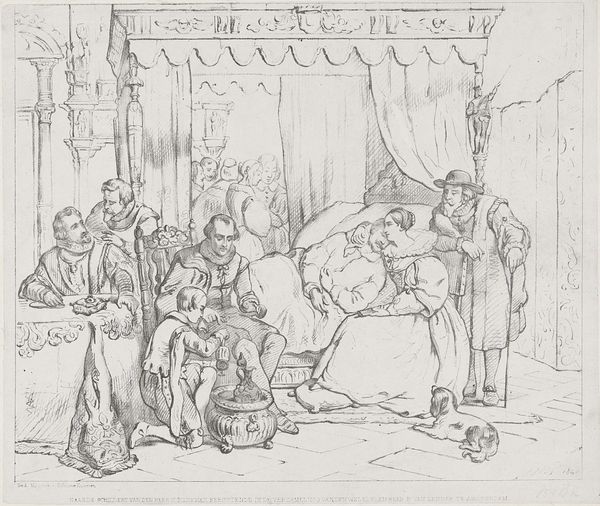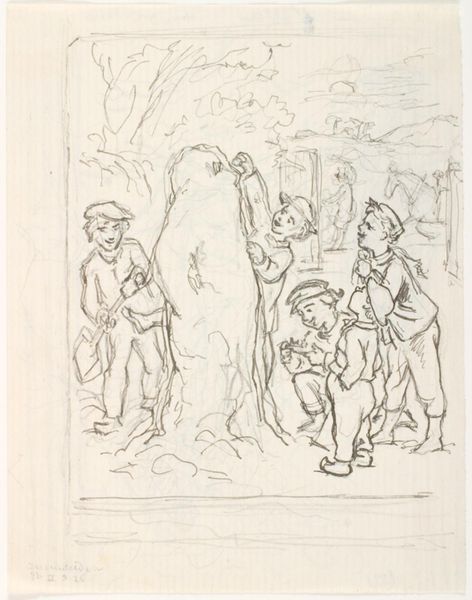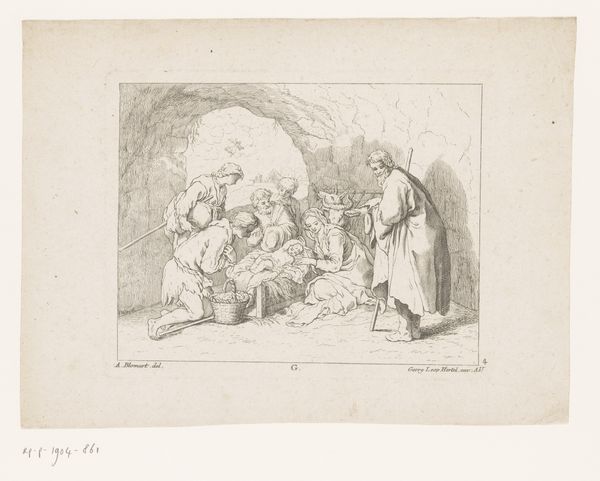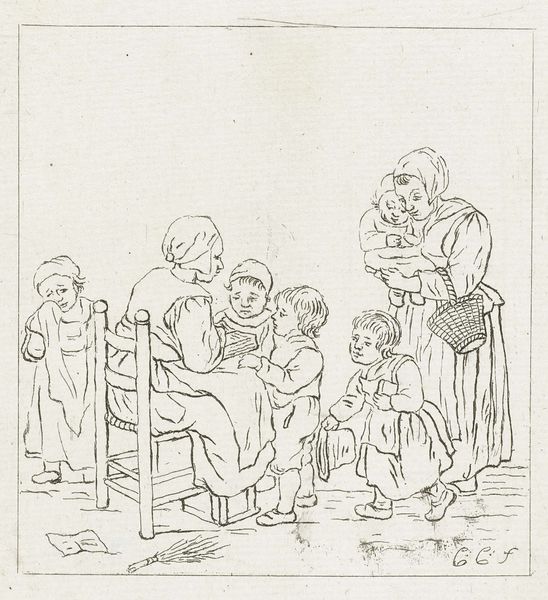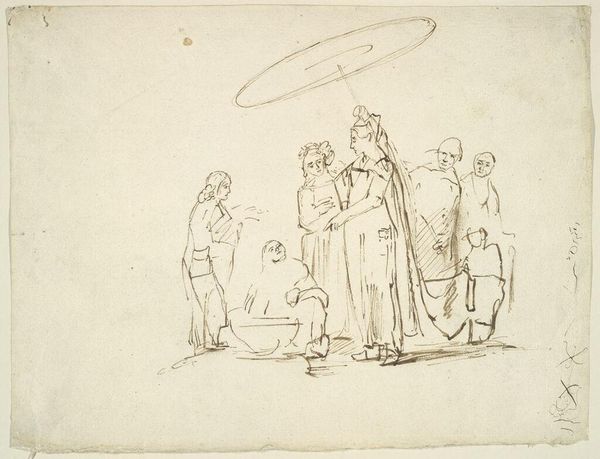
drawing, paper, ink, pen
#
drawing
#
narrative-art
#
baroque
#
landscape
#
figuration
#
paper
#
ink
#
pen
#
genre-painting
Dimensions: height 200 mm, width 228 mm
Copyright: Rijks Museum: Open Domain
Editor: So, this pen and ink drawing, "Christ with Two Disciples Before the Inn at Emmaus" by Nicolaes Maes, dated sometime between 1650 and 1655...it feels surprisingly intimate. Not what I expect from a religious scene. How do you interpret this work? Curator: It’s compelling how Maes takes this powerful biblical narrative and frames it within the mundane, almost the quotidian. We are witnessing a pivotal moment through the lens of ordinary life, emphasizing the human element in spiritual encounters. It reflects the socio-political context of the Dutch Republic at the time, where religious introspection was increasingly interwoven with daily existence. Editor: Human element... so, it's not just about religious devotion then? Curator: Absolutely. Think about the setting: an inn, a space for travelers, for exchanges. This image questions who gets access to divine recognition, to the table, so to speak. Who is allowed to participate in this kind of exchange and what does it mean if you’re excluded? Does Maes include any other marginal figures on the periphery? Editor: I see! There's the innkeeper in the window, almost like a silent observer. Then there’s the dog in the corner; seemingly disinterested, perhaps a metaphor for apathy. Curator: Precisely! Maes prompts us to consider the complexities of faith, not just as dogma, but as a lived experience shaped by class, visibility, and perhaps even indifference. This artwork speaks to power dynamics of who belongs, who sees, and who is seen. Editor: I never would have looked at a religious scene like this. It's amazing how much is happening under the surface! Thanks! Curator: Indeed. This piece, rendered in simple pen and ink, carries profound implications for our understanding of identity and belonging. It makes us rethink art's potential to instigate necessary cultural self-reflection.
Comments
No comments
Be the first to comment and join the conversation on the ultimate creative platform.
